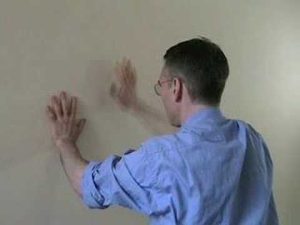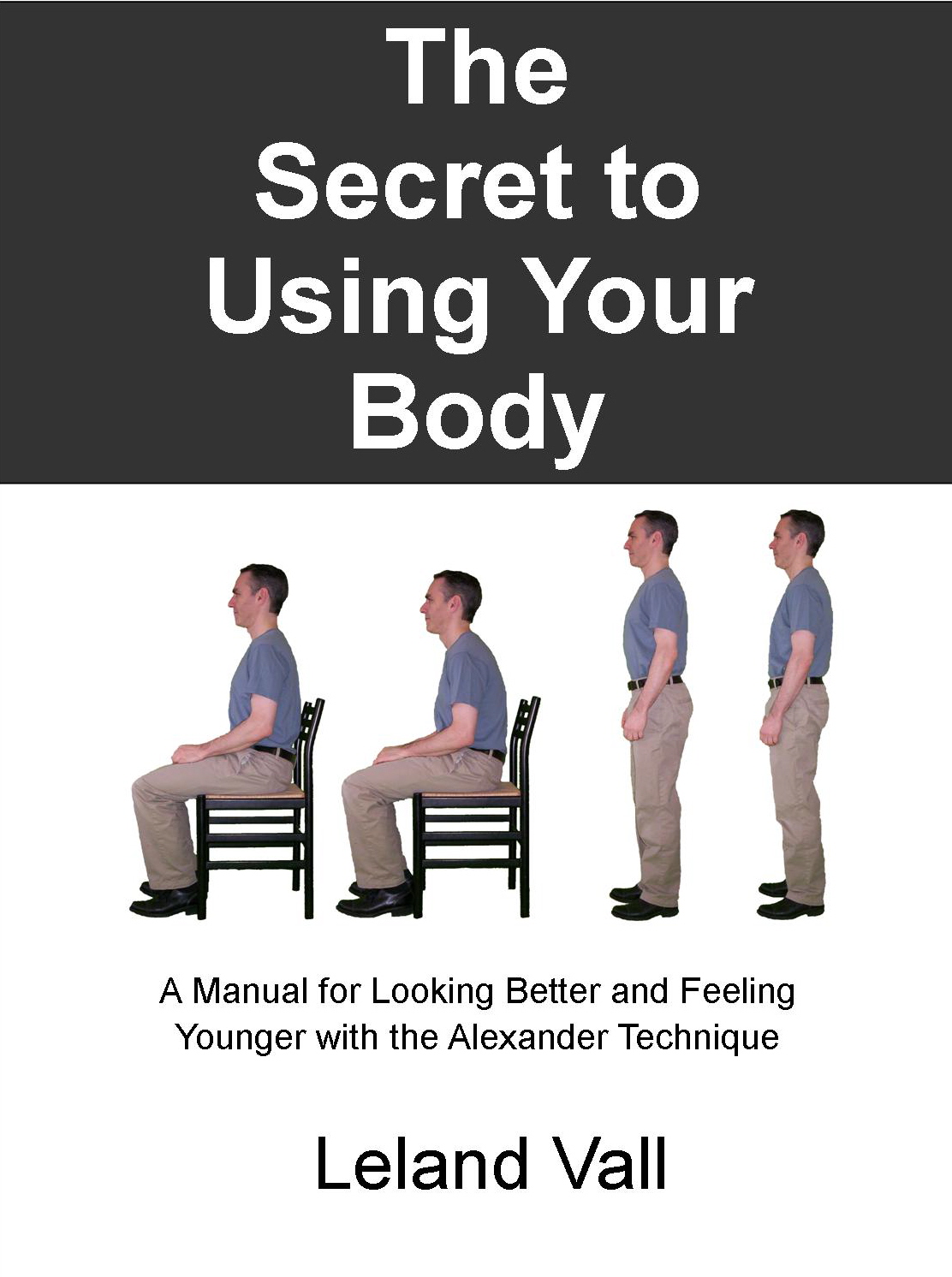Three short experiential exercises to help you improve the way you walk. Practice them every day for a few weeks to:
- Feel stronger and more grounded.
- Walk more easily.
- Look and feel taller and more confident.
- Improve athletic performance.
- Gain a clearer understanding of how to use the ground to improve balance and control in movement.
Concept
These exercises help you to change the way you think about standing and walking. As you walk, one leg at a time keeps you from falling to the ground. A common problem is the unconscious tendency to be too concerned about the next step and the foot that is off the ground. This concern about the next step weakens the bond between the ground and the current standing leg, compromising stability and control.
Exercise 1 – The Wall as Ground
Face the wall and lean against it with one hand at a time, switching hands as if you are walking in place with your hands. Be careful to leave your torso as still as possible so that it does not move toward or away from the wall, or from side to side.
As you do the exercise, think about each hand as it presses against the wall. It is easy to get distracted by the moving hand but try to recognize that it is the hand against the wall that is doing the work and is keeping you from falling against the wall. Think about that as you also imagine your arms as your legs and the wall as the ground. Continue the exercise for about 30 seconds.
Exercise 2 – March in Place.
In this exercise you will march in place. To begin, stand with your feet touching each other and then send one knee forward until your thigh is parallel to the ground. As your knee rises, let your foot hang directly under your bent knee. Once your thigh is parallel to the ground, place your foot back on the ground and repeat with the other leg.
Just as with the previous exercise, think mostly about the foot that is on the ground. It is easy to get distracted by the moving leg but try to recognize that it is the standing leg against the ground that is doing the work and is keeping you from falling to the ground. Continue the exercise for about 30 seconds.
Exercise 3 – Slow Walk
This exercise is similar to the previous exercise except that your feet pass each other and you make very slow forward progress. It looks complicated when it is written out, but it is really just moving one leg and then the other.
Starting with your feet touching each other and without moving your torso forward, place your one foot slightly forward on the ground while leaving all of your weight on your back foot. Do not shift your weight to the front foot.
After a moment, shift all of your weight to the front foot by bending your front knee. Leave the back foot fully on the ground.
After a moment, without moving your torso or shifting your weight or moving your front leg, swing your back leg forward and place it slightly forward of the standing leg. Do not shift your weight to the new forward foot.
After a moment, shift all of your weight to the new front foot by bending your front knee. Leave the back foot fully on the ground.
After a moment, swing the back leg forward and begin again.
As you do this exercise, it is important that you avoid thinking that you are walking and concentrate only on completing the instructions over and over again. Throughout, think more about the standing leg than the moving leg and recognize that, just as your arm kept you away from the wall, your standing leg is keeping you away from the ground.
You can take as much time as you want doing this exercise. You can also change it by lengthening the stride and changing direction. Throughout, it is vitally important to be aware of the standing leg and to consider the forward movement as incidental to the activity of following the instructions.
Changing the Way You Walk
To incorporate the exercise into your walking, experiment with a shorter stride and think more about your standing leg than your moving leg. Put the new foot down lightly. Notice the power you have in your standing leg and the time you have to place the next foot. Over time, you can work at lengthening your stride. Try to recognize that you have more control because your connection to the ground is clearer.
Read more below:
To receive these weekly tips as an email, visit Weekly Alexander Technique Tips. Please read and/or write comments below.



